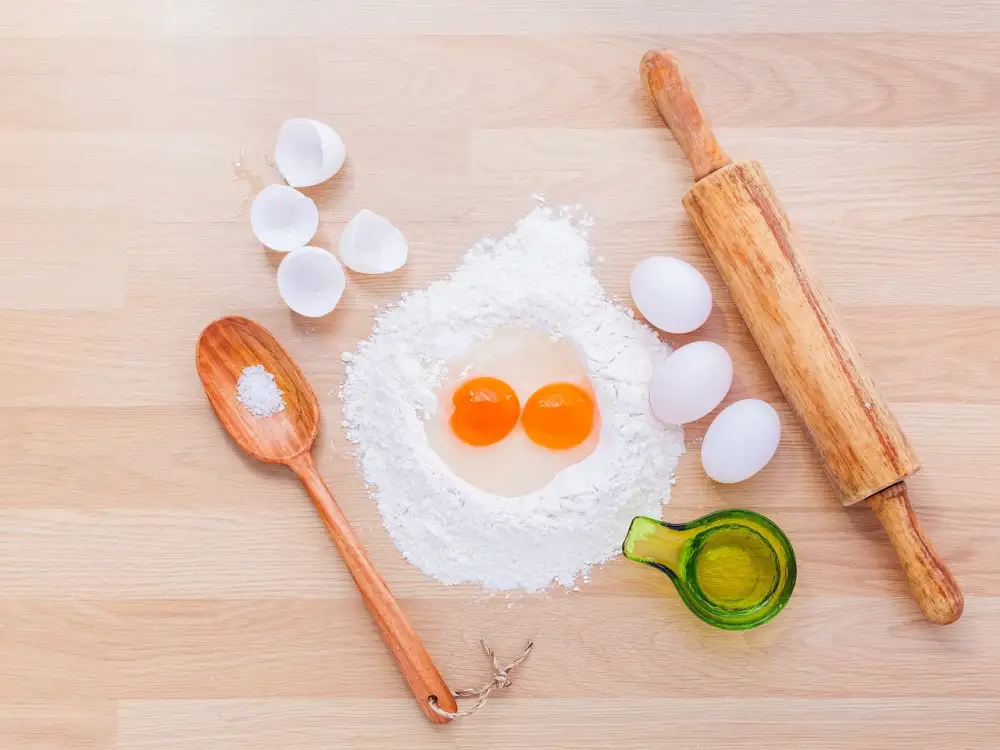Mastering the Art of Short Crust Pastry: A Delicious Foundation for Perfect Pies and Tarts

- Introduction to Short Crust Pastry
- History and Origins of Short Crust Pastry
- Ingredients Required for Making Short Crust Pastry
- Step-by-Step Guide to Making Short Crust Pastry
- Tips and Tricks for Perfect Short Crust Pastry
- Popular Variations and Uses of Short Crust Pastry
- Pairing Suggestions for Short Crust Pastry
- Conclusion: Embrace the Versatility of Short Crust Pastry
Introduction to Short Crust Pastry
Introduction to Short Crust Pastry:
Short crust pastry is a versatile and delicious foundation for pies and tarts. It is a classic pastry that is loved by food enthusiasts all over the world. With its buttery and crumbly texture, short crust pastry adds a delightful touch to both sweet and savory dishes. Whether you are a beginner or an experienced baker, mastering the art of short crust pastry will elevate your culinary skills to new heights. In this article, we will explore the history, ingredients, step-by-step guide, tips and tricks, as well as popular variations and uses of this delectable pastry. So get ready to embark on a journey of creating perfect pies and tarts with the art of short crust pastry!
History and Origins of Short Crust Pastry
Short crust pastry, with its buttery and crumbly texture, has been a staple in the culinary world for centuries. Its origins can be traced back to medieval times, where it was first used as a simple casing for meat pies. The concept of using flour and fat to create a pastry shell was not new, but it was during this period that short crust pastry truly began to take shape.
The term "short" in short crust pastry refers to the high proportion of fat to flour used in its preparation. This results in a tender and delicate crust that easily breaks apart (hence the term "crumbly"). Originally, lard was the fat of choice for making short crust pastry. However, as butter became more readily available, it quickly replaced lard as the preferred fat due to its rich flavor.
Over time, short crust pastry evolved and became more versatile. It found its way into sweet pastries like fruit tarts and custard pies. In fact, during the Renaissance period, short crust pastry gained popularity among European royalty who enjoyed indulging in elaborate sweet tarts filled with fruits and creams.
The popularity of short crust pastry continued to grow throughout history. It made its way across continents and became an integral part of various cuisines around the world. Today, it is still widely used in both savory and sweet dishes, showcasing its adaptability and timeless appeal.
The history of short crust pastry is a testament to its enduring nature and versatility. Whether you're making a classic apple pie or experimenting with innovative flavor combinations, mastering the art of short crust pastry opens up a world of possibilities in the realm of baking.
Ingredients Required for Making Short Crust Pastry
To make the perfect short crust pastry, you will need just a few simple ingredients. The main components include flour, butter, salt, and cold water. The flour provides structure and stability to the pastry, while the butter adds richness and flavor. A pinch of salt enhances the taste and helps to balance the sweetness of any fillings. Lastly, cold water is essential for binding the ingredients together and creating a cohesive dough. With these basic ingredients on hand, you are ready to embark on your journey to mastering the art of short crust pastry.
Step-by-Step Guide to Making Short Crust Pastry
Tips and Tricks for Perfect Short Crust Pastry Popular Variations and Uses of Short Crust PastryPopular Variations and Uses of Short Crust Pastry:
Short crust pastry is a versatile dough that can be used to create a wide range of delicious treats. One popular variation is the sweet short crust pastry, which incorporates sugar into the dough for a sweeter taste. This variation is commonly used in desserts such as fruit tarts, custard pies, and even cheesecakes.
Another variation is the savory short crust pastry, which omits sugar and instead adds herbs or spices for flavor. This type of pastry is perfect for making quiches, savory pies, and hand pies filled with meats or vegetables.
Short crust pastry can also be shaped into individual tart shells or pie crusts. These can be filled with various fillings like chocolate ganache, lemon curd, or creamy custards. The possibilities are endless when it comes to creating unique and delicious desserts using short crust pastry.
In addition to traditional pies and tarts, short crust pastry can also be used to make other delightful treats. It can be rolled out thin and cut into strips for lattice toppings on pies or twisted into decorative shapes for added visual appeal.
Furthermore, short crust pastry can be transformed into bite-sized appetizers like mini quiches or tartlets. These miniature delights are perfect for parties or gatherings where guests can enjoy a variety of flavors in one go.
Whether you prefer sweet or savory creations, short crust pastry provides a solid foundation for your culinary adventures. Its buttery texture and crispness make it an ideal base for both classic recipes and innovative twists. So don't hesitate to experiment with different fillings and flavors to truly embrace the versatility of short crust pastry in your kitchen!
Pairing Suggestions for Short Crust Pastry
Pairing Suggestions for Short Crust Pastry:
Short crust pastry is an incredibly versatile base that pairs well with a variety of flavors and fillings. Here are some delicious pairing suggestions to enhance your short crust pastry creations:
1. Fruit Fillings: The buttery richness of short crust pastry complements the natural sweetness of fruits like apples, berries, and stone fruits. Try filling your tart or pie with a combination of seasonal fruits for a burst of freshness.
2. Chocolate Ganache: Indulge in the decadence of chocolate by pairing it with short crust pastry. Pour silky smooth chocolate ganache over a pre-baked tart shell for an irresistible treat that will satisfy any sweet tooth.
3. Savory Fillings: Short crust pastry is not limited to sweet treats; it also works wonders with savory fillings. From quiches to pot pies, the crisp and flaky texture of the pastry provides a delightful contrast to hearty meat or vegetable fillings.
4. Creamy Custards: For a luscious dessert, consider pairing short crust pastry with creamy custards such as vanilla or lemon curd. The buttery crust adds depth to the smooth custard, creating a harmonious balance of flavors.
5. Nutty Delights: Enhance the nuttiness of almonds, pecans, or walnuts by incorporating them into your short crust pastry creations. Whether as a filling or as part of the dough itself, nuts add texture and flavor complexity to your baked goods.
Remember, experimentation is key when it comes to pairing short crust pastry. Don't be afraid to try new combinations and let your creativity run wild in the kitchen. With its versatility and ability to complement both sweet and savory flavors, short crust pastry is truly a culinary wonderland waiting to be explored!
Conclusion: Embrace the Versatility of Short Crust Pastry
In conclusion, mastering the art of short crust pastry opens up a world of culinary possibilities. Its versatility allows for endless creativity in both sweet and savory dishes. Whether you're making a classic apple pie or a savory quiche, the buttery and flaky texture of short crust pastry will elevate your creations to new heights. Don't be afraid to experiment with different fillings, flavors, and shapes to truly make it your own. So go ahead, embrace the versatility of short crust pastry and let your imagination run wild in the kitchen!
Published: 15. 11. 2023
Category: Food



